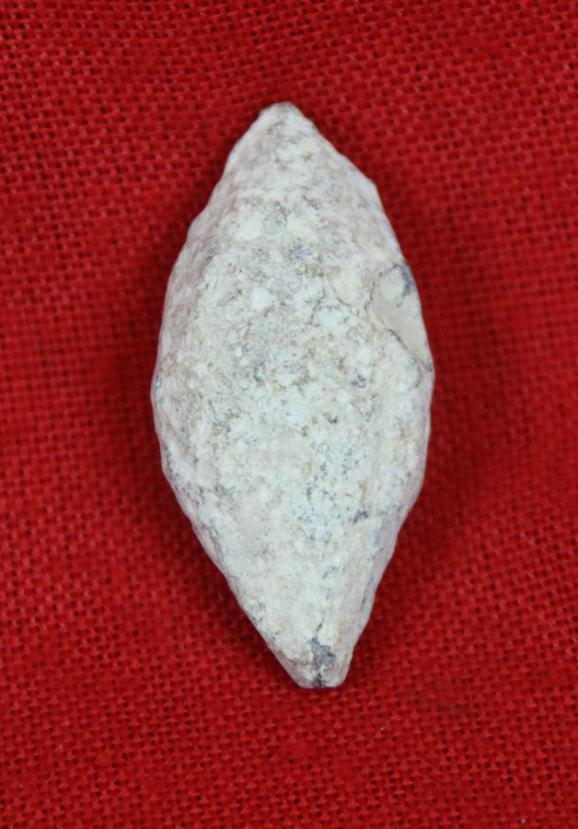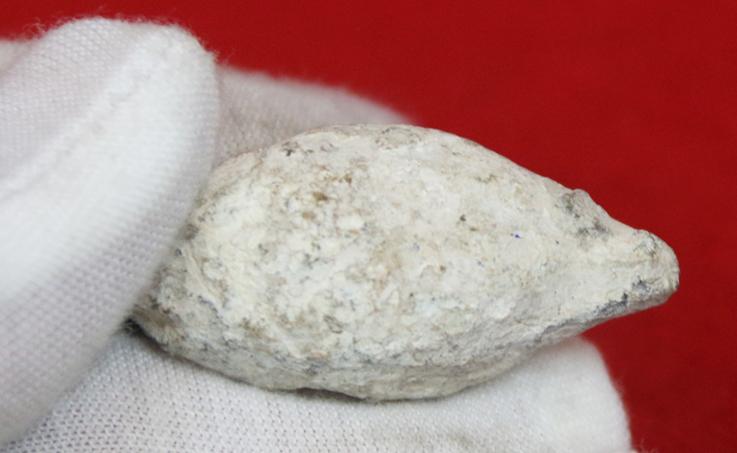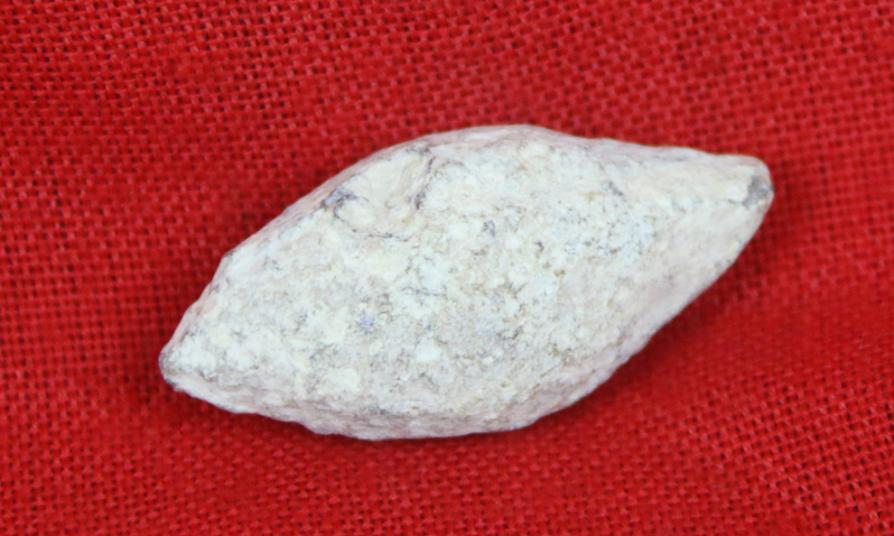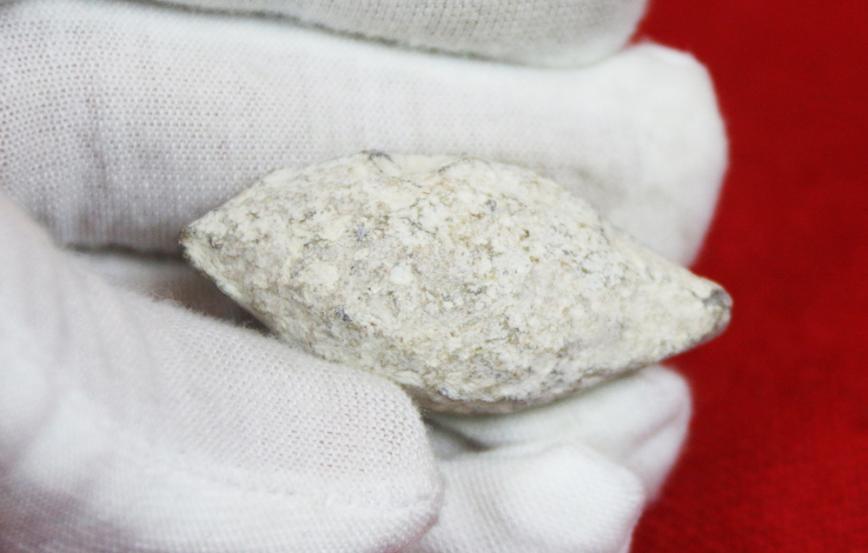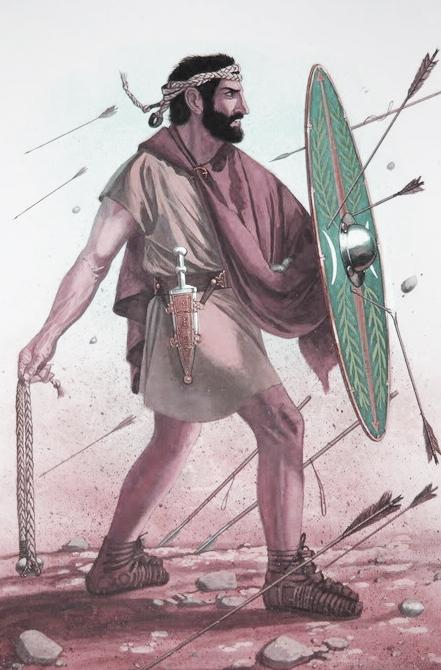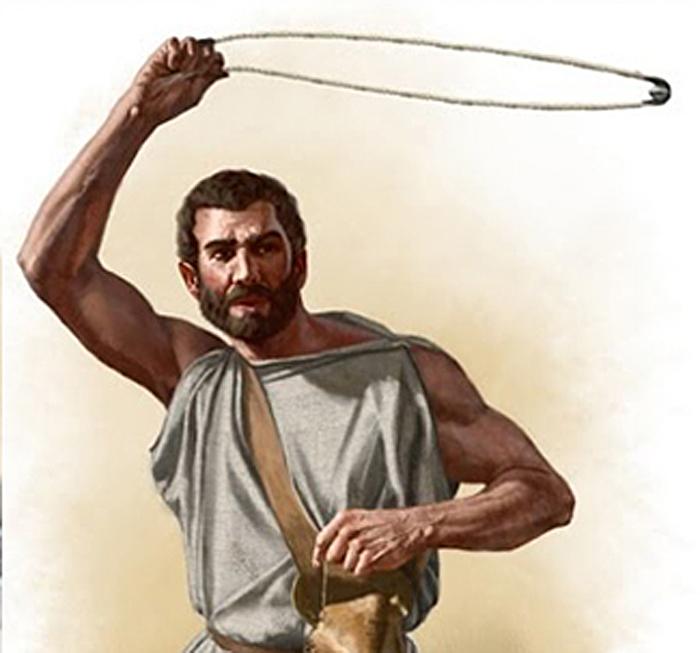Roman 1st century, Large, Lead Sling Bullet, Acquired Near Camulodunum-Colchester-In the 1820's
From part four of our original ancient arrow heads, spears, lead sling bullets, antiquities and rings from an 1820 Grand Tour Collection. The Battle of Camulodunum, also known as the Massacre of the Ninth Legion, was the major military victory of the Iceni and their allies over an organised Roman army during the revolt of Boudica against the Roman occupation of Britain. A large vexillation of the Legio IX Hispana were destroyed by the rebels. While attempting to relieve the besieged colonia of Camulodunum (Colchester, Essex), legionaries of the Legio IX Hispana led by Quintus Petillius Cerialis, were attacked by a horde of British tribes, led by the Iceni. Possibly 80% of the Roman foot-soldiers were killed in the battle. The event is recorded by the historian Tacitus in his Annals. The Iberian auxiliaries or legionaries were the most famous of the Roman 'slingers' in the roman armies.In AD 60 or 61, the southeastern area of the island rose in revolt under Boudica, while the Roman governor, Gaius Suetonius Paulinus, was campaigning in Wales. The Iceni were joined by the Trinovantes, and their first target was Camulodunum, formerly the Trinovantian capital, now a colonia or settlement of discharged Roman soldiers. Tacitus reports it was poorly defended, and archaeology confirms its former military fortifications had been levelled by this time. The colonists appealed for aid to the procurator, Catus Decianus, who sent only two hundred auxiliaries. Camulodunum was burned, and the temple, where the last of the defenders took refuge, fell after a two-day siege. The defenders were massacred.
The Ninth Legion, commanded by Quintus Petillius Cerialis, attempted to relieve the siege. It is unlikely that the entire legionary strength of some 5,000 men was involved in the battle. Detachments of the legion were spread out across a network of small forts; on short notice, Cerialis was likely able to call on only the first cohort, possibly two others, auxiliary infantry, and a unit of some 500 cavalry - a total of perhaps 2,500 men. Cerialis set out from his base in Lindum Colonia (Lincoln). From Lindum, it was a distance of at least 110 miles. They may have taken the Roman road to Camulodunum from Durovigtum (Godmanchester, Cambridgeshire), a march of some 75 miles which would have taken three days.
However, they arrived too late to relieve the colonia. The British tribes had gathered a considerable force by the time Cerialis and the Ninth approached Camulodunum. They overwhelmed the detachment in the field and defeated it, routing the Romans. Tacitus says their entire infantry strength was wiped out, with only Cerialis and his cavalry able to retreat to their fortified camp. According to George Patrick Welch, "In the initial contact and later rear-guard actions he lost about 2,000 men, or one-third of his infantry strength."
Slingers wore three slings. A large one tightened to the waist (to be used in distances of more than 60 metres.), a small, one tightened around his forehead (range 20-25 metres.) and a medium size one always on the hand (with a range up to 60 mts.). They carried the bullets in a goat fur bag hanging from the shoulder. With the large one they could launch 500 grams stones (like a tennis ball) that were able to destroy shields and wood defences. With the small and medium size slings the lead bullets could perforate at short distances (up to 60 metres.) thin armours and helmets. The sling as a weapon was widely used not only by Balearic warriors but by other Iberian warriors and also by Roman auxiliary troops like Greeks, Sicilians, North Africans, but after the Roman conquest of the Balearic Islands elite slingers were always the Balearic that fought in the legions of Julius Caesar. Bullets are usually found on the known battle fields of the Roman conquest.
Every single item from The Lanes Armoury is accompanied by our unique Certificate of Authenticity. Part of our continued dedication to maintain the standards forged by us over the past 100 years of our family’s trading
This bullet weighs 62.5grams, and is 48mm long.
Code: 23804
235.00 GBP

